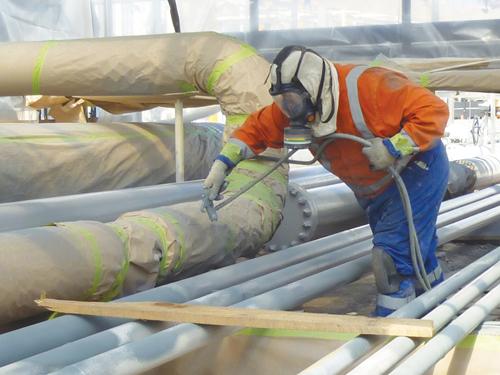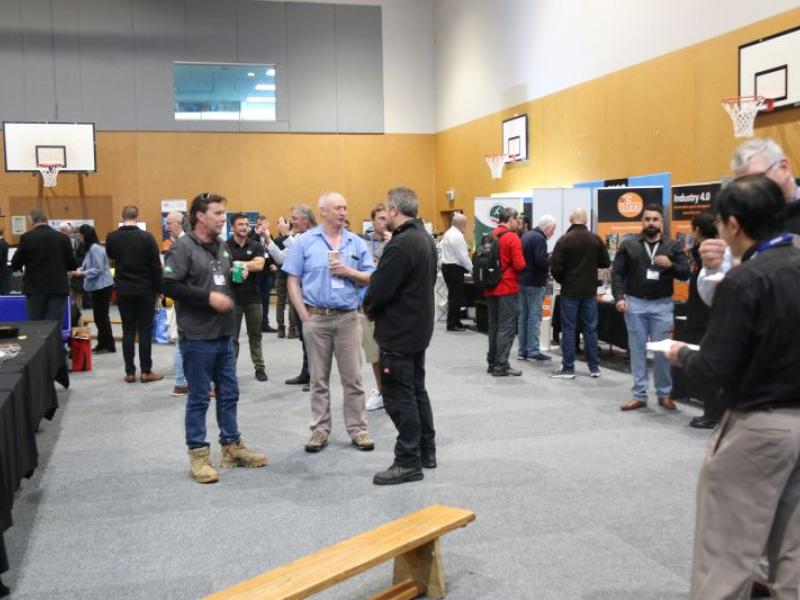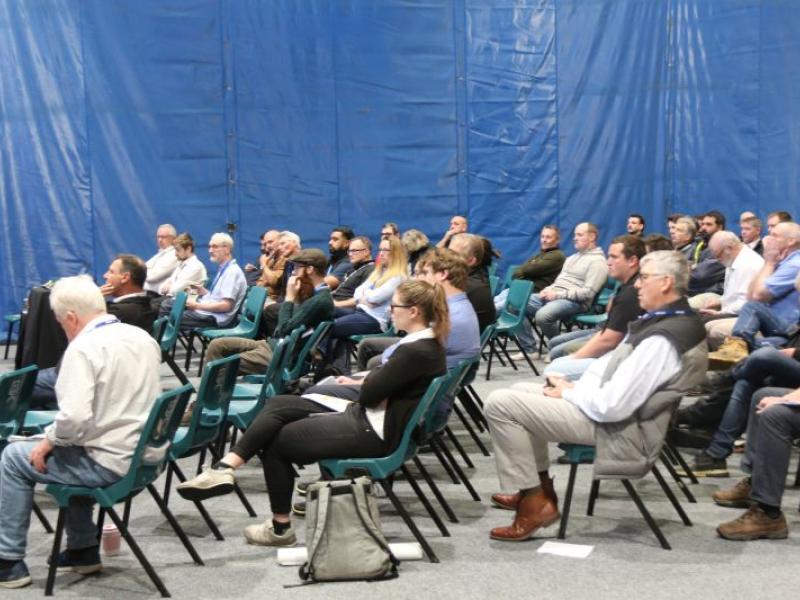Ron Berry has more than 33 years’ experience in the corrosion management industries. His background includes corrosion assessment and failure analyses.
He owns New Plymouth-based NZ Inspection Rentals, a firm that also trades under the name RB Corrosion Services, and has spent 26 years working with the oil & gas offshore and onshore processing industries – helping clients combat corrosion, as well as developing planning and budgeting maintenance painting programmes.
Much of the firm’s workload of late has been in the Taranaki region and on offshore structures. He says the key to any successful project has to be the initial inspection – to establish current condition and the appropriate treatment based on what the client specifies.
“If someone is spending a million dollars on a protective coatings project without any inspection then there are lots of things that can go horribly wrong,” he says.
And if you thought a million dollars for a coating project is a big budget job – then it’s as well you understand how that money can be spent.
“Out of that million dollars, around half is spent gaining access with scaffolding,” he says.
“The next part is the surface preparation and that takes around half of what’s left, and that leaves just 25 per cent of the budget for applying the surface coating.
“Pre-inspection depends on each client’s needs and the level of detail required – including budget preparation.”
Skipping a thorough inspection, scrimping on the preparation, or rushing the application is not recommended.
“People go and apply coatings under all sorts of conditions,” says Ron. “They get into binds with time constraints, they start to work in any weather… there are lots of things that go wrong because material is applied under the wrong conditions. Too hot, too cold, too humid.
“I know of one coating job that cost $78,000 to do in the workshop. Now it’s onsite and failing, it is costing $800,000-plus to put it right. All because the preparation was not done well, and the coating was not fit for the purpose.
“They have this issue now, all because they wouldn’t pay a few thousand dollars to inspect the job as it progressed. Inspections should happen numerous times during each phases of the job, through to daily visits to see what happened the day before so people can check that the paint has cured etc.
“An inspector might tell contractors they need to use more paint, or less paint, whatever the case may be.”
Ron says because his firm has a long history in the inspection and coatings industry, its staff can help firms put maintenance schedules together.
“We’ll go out and assess the plant, and put a report together covering two years and break it into priority areas along with a cost assessments,” he says. “This is something that should be done every two years.
“Our recommendations can form part of a bidding contract for the client, or a work plan for a company’s maintenance staff. And that’s what we are doing for some of our offshore projects.”
Among the changes seen by Ron over his more than three decades in the business include companies relying less on abrasive blasting to clean metal with garnet or sands due to cost.
“More people are moving into ultra-high pressure water blasting, or water assisted abrasive blasting – where they use a mixture of water and abrasives – and that uses a small amount of abrasive content,” he says.
“Right now, garnet is costing around $600 a tonne, and five or six man-hours minimum to sweep the garnet all up again [after it has been sprayed]. It can cost up to $400 a tonne to dispose of it – due to the contaminants.”
He says: “For one tank here in Taranaki we budgeted 770 tonnes of garnet to clean it. But guess what, the plan has changed and we will be cleaning it with mostly water, and then give it a final clean using garnet. That way we will only use between 70 and 150 tonnes of garnet.”
That means reducing the cost of garnet from $462,000 to between $42,000 and $90,000.
“There is a range of metal sprays that involves cleaning the surface with abrasive blasting, but using a wire, fed through a thermal arc that melts it and sprays it onto the surface.
“There are few companies doing that, but you can’t use it everywhere – such as oil and gas installations – because it uses a naked flame. But it can be used in workshops before items are taken on site.
“So this technique is generally restricted to new works, and there are quite a few shops around the country that can offer this treatment.”
He says many of his suppliers are working on new coating technologies, but says he needs to check all products before putting them in front of clients. Ron says he’s looking for coating products that have a longer life, improved adhesion, that can be applied with less surface preparation, and for products that can be applied in a single coat.
“Our biggest cost still remains labour,” he says. “So if we can cut out one coat of paint, then that will be a significant labour saving – and that’s what it’s all about,” he says.
“Other developments are high temperature coatings. We have a great deal of difficulty getting paint to stay on surfaces that reach the 200-to-350-degree mark. Most of the coatings on hot objects typically haven’t lasted all that long. But there are new developments by all our suppliers in this area.
“A big part of recoating structures in the oil and gas industry is from mechanical damage, and a lot of plant, and equipment in this industry has to be pulled apart every four years for statutory surveys – and things get damaged when that happens – and that creates a lot of work.
“Even taking off bolts can damage things, and that all has to be put right when the gear is put back together. So a lot of stuff in the industries we work in are painted every four years.”
Ron says testing and inspection equipment has been developing fast, with data now being stored in the cloud for easy sharing with staff and clients.
“We’re using electronic data loggers, WiFi, and storing it all in the cloud – it means a lot of the weather monitoring equipment, and paint surface profile gauges that we use can be gathered electronically and save us a huge amount of labour.
“It avoids any errors that can be caused by manual readings being noted down,” says Ron.






